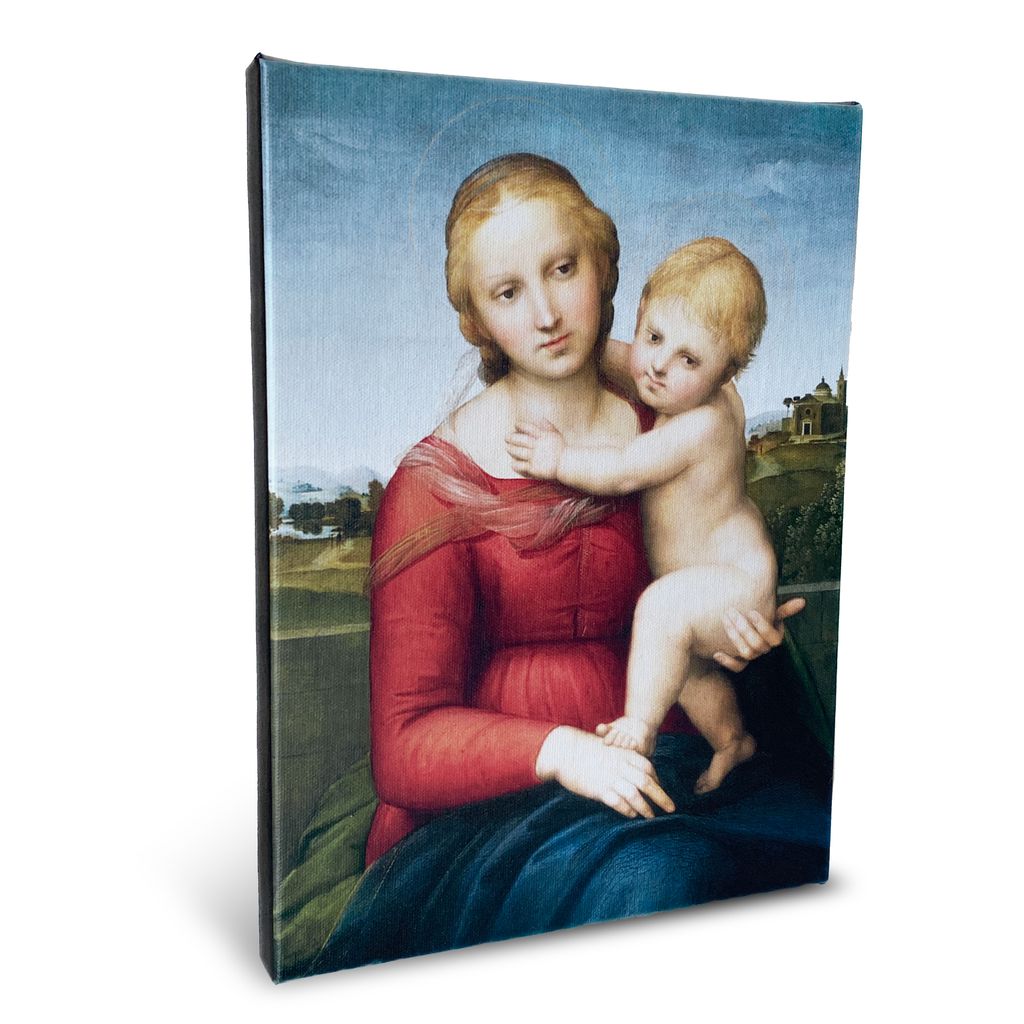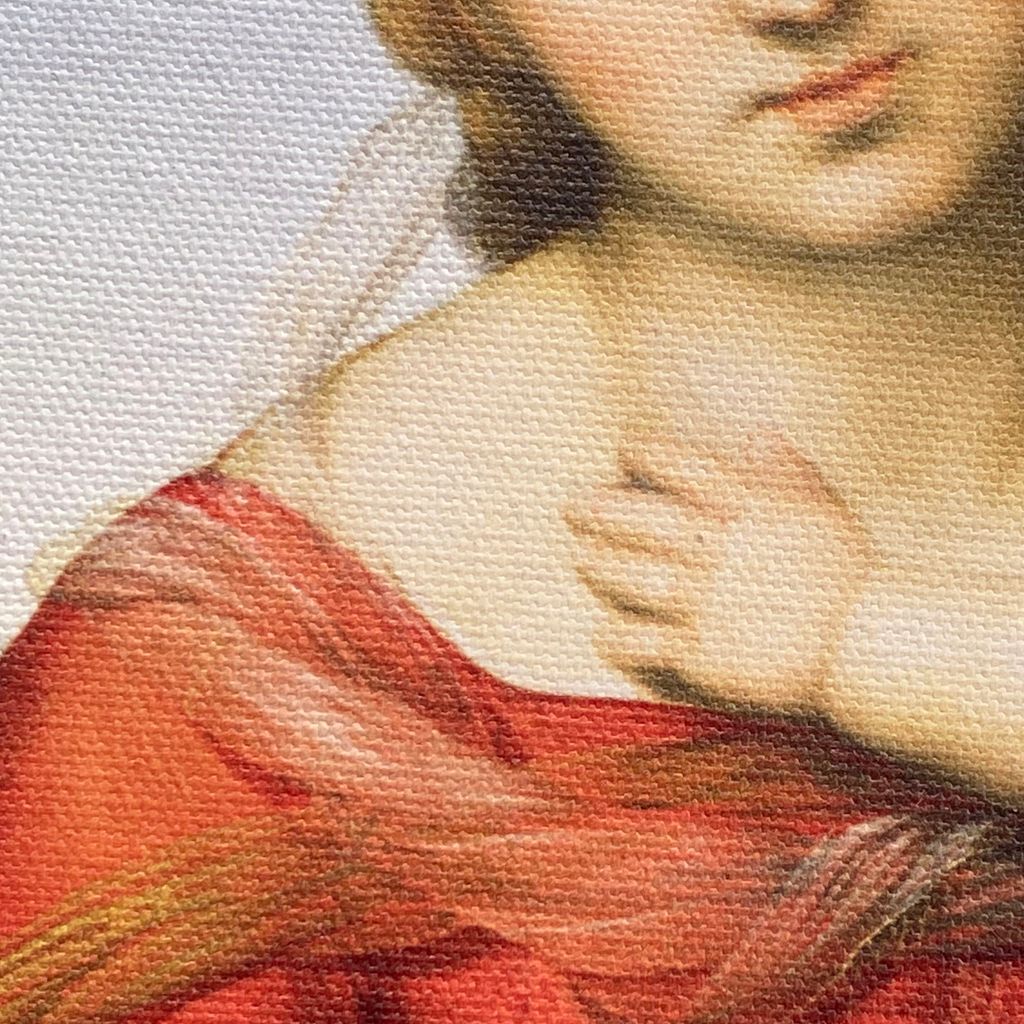The Small Cowper Madonna 1505 by Raphael - Canvas Art (Made to Order)
This item is made to order. Kindly check delivery dates with us before ordering.
- Handmade.
- Printed, Stretched, and Stapled locally.
- 12(H) x 9(W) inches Canvas.
- Premium Grade Poly-Cotton Canvas.
- Genuine UV Resistant Inks
- Matte finish
- No Chemical Coating
- Stretched on Wooden Frame
* Due to differences in monitor colour settings, the colour you see on your computer or mobile device may be slightly different from the print you receive.
* Avoid direct sunlight and strong lighting.
The Small Cowper Madonna
The Small Cowper Madonna, painted by an Italian painter and architect of the High Renaissance, Raffaello Sanzio, better known as Raphael.
Raphael is one of the very few greatest artists of his time, commissioned to decorate halls in the Vatican City in the 15th and 16th century.
It is not known exactly why the Small Cowper Madonna was painted. It was probably either a private commission or for the general art market; images of the Madonna and Child were often given as wedding presents.
Raphael depicts Mary and the Christ Child, with 1500s Italian countryside as the background.
Sitting in the center of the work in a bright red dress is the Madonna. She is fair skinned with blonde hair. She sits comfortably on a wooden bench. Across her lap is a dark drapery upon which her right hand delicately sits. There appears to be a sheer translucent ribbon elegantly flowing across the top of her dress and behind her head. The faintest golden halo miraculously surrounds her head.
In her left hand she holds the baby Christ, who embraces her with one arm around her back, the other around her neck. He, an undeniably precious child, looks back over his shoulder with a coy smile.
Behind them, a beautifully clear and bright day unfolds. Off in the distance two figures appear to be ambling toward a reflective pond, enjoying the green scenery around them.
A large and very impressing structure stands at the end of a long path, which one could presume to be a Catholic church. Its dome and other structural elements common of Catholic architecture add to the already omnipresent atmosphere of religious divinity and grace.




